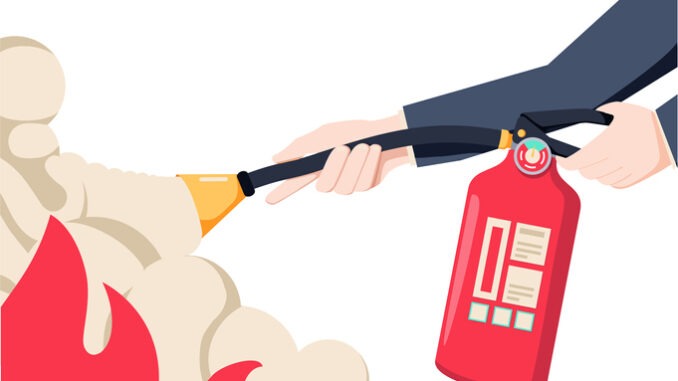
Phil Burton, SBM at Hallbrook and Cosby Primary Schools, uses his recent experience to summarise some of the key points he has learned about fire safety
Read the full article below on page 23 in our January magazine
As I sit to write this article I am completing the NEBOSH Fire Safety Certificate and am thinking about all the things that I now need to review, or implement, across my schools. To be honest, we are not in a bad position; in fact, I would go as far as to say we are in a very good position. However, attending this course has made me think about things – so, with that in mind, I felt it might be a good write up to share the detail of what I found.
Firstly, have you ever heard of the Regulatory Reform (Fire Safety) Order 2005? (RRFSO) Of course, you have I hear you say. This is the legal framework which details everything you need to know and do in order to comply with fire safety. The document is 68 pages long – and I have read every word on every page.
Your school will have a responsible person, usually the headteacher who is accountable for ensuring that every detail of the RRFSO is adhered to. They are the ones who, if you have any shortcomings, will face prosecution (depending on the severity of the incident). They have in the region of 50 articles to ensure are met in your school. It is impossible for me to go through everyone one, but here are the five key bits I think are worth knowing.
- You must complete a suitable and sufficient fire risk assessment for your premises. In most cases this will be someone with experience and suitable knowledge. It should be reviewed annually internally and then either every five years externally or if major changes occur to the building or people within the five-year time frame.
- You must have detailed evacuation procedures which are shared amongst the staff of the school, so they all know what to do in the event of an emergency. These procedures should be tested at least twice a year although most schools will do this termly in the form of a fire drill. Remember to log and record any pointers to improve and demonstrate that you have carried them out.
- Whilst in and around the school make sure that your corridors and escape routes are kept clear from obstruction at all times. Do you check that the fire doors all open, even the ones that never get used?
- In the event of a fire make sure someone goes to meet the fire brigade and they take with them the grab bag which has all the key pieces of information the officers will need – floor plans, areas where there may be higher risks, such as LPG cylinders, locations of utility mains switch offs and anything they may find useful.
- Ensure you are doing some training with your staff on fire safety. This will be in the form of induction, annual refreshers, and then feedback after incidents such as drills. Make sure you keep a log of the training to demonstrate to the officers that it has been happening.
These pointers are just the tip of the iceberg when it comes to fire safety – there is so much more that needs to be done and everyone should play a part in ensuring the safety of others. Whilst fire is relativity uncommon, it does happen, and you want to make sure that everyone gets out safely when it does.
You can find more of your responsibilities by searching the RRFSO2005 and reading through everything that is needed.


Be the first to comment